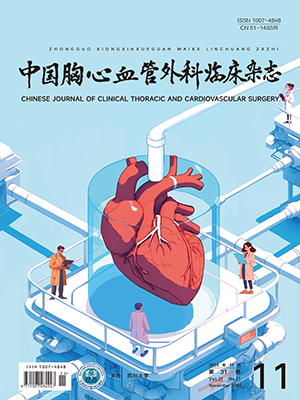Objective To summarize the experience of emergency coronary artery bypass grafting (CABG) after failed percutaneous coronary intervention. Methods From January 1998 to December 2002, 9 patients underwent emergency CABG after failed percutaneous coronary intervention. The indications of emergency CABG were coronary artery dissection (5 cases)or perforation (2 cases) and acute arterial occlusion (2 cases). The time averaged 2 hours from onset of ischernia to revascularization. The CABG was performed under off-pump bypass in 3 cases and under CPB in 6 cases. The mean graft number was 3. Results There were no hospital death. The mean follow-up was 17 months. No death and angina occurred. The function of New York Heart Association class Ⅰ-Ⅱ were in 8 patients, class Ⅲ in 1 patient. Conclusion Emergency CABG is an effective management for failed percutaneous coronary intervention if the indication is right.
Citation: Zhang HuaiJun,Hu ChengShou,Song YunHu,et al .. Emergency Coronary Artery Bypass Grafting after Failed Percutaneous Coronary Intervention. Chinese Journal of Clinical Thoracic and Cardiovascular Surgery, 2005, 12(4): 256-257. doi: Copy




